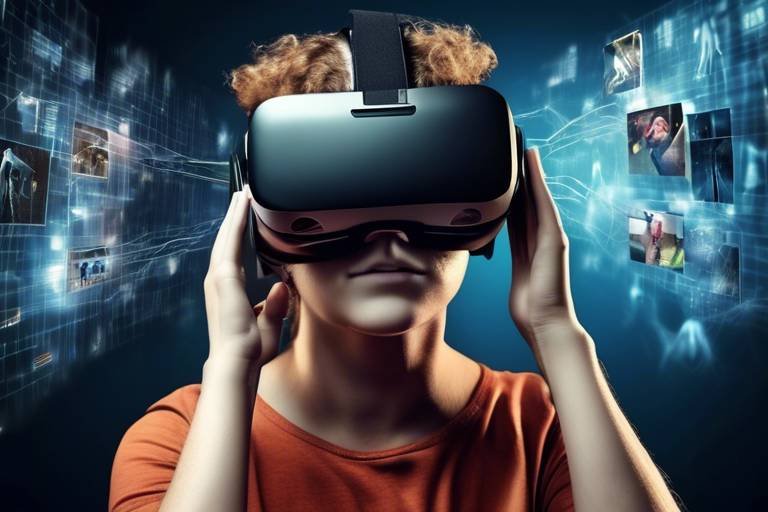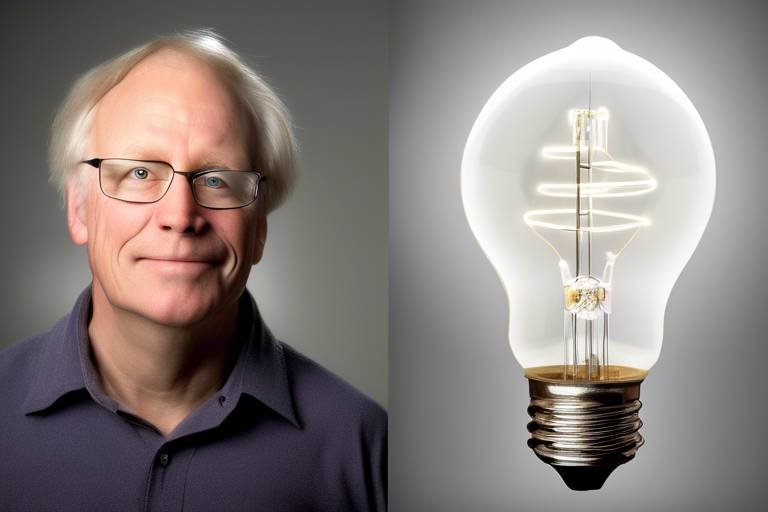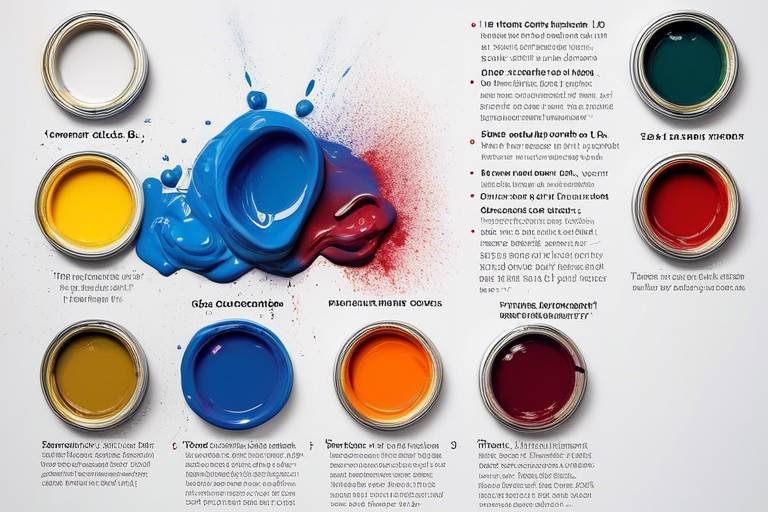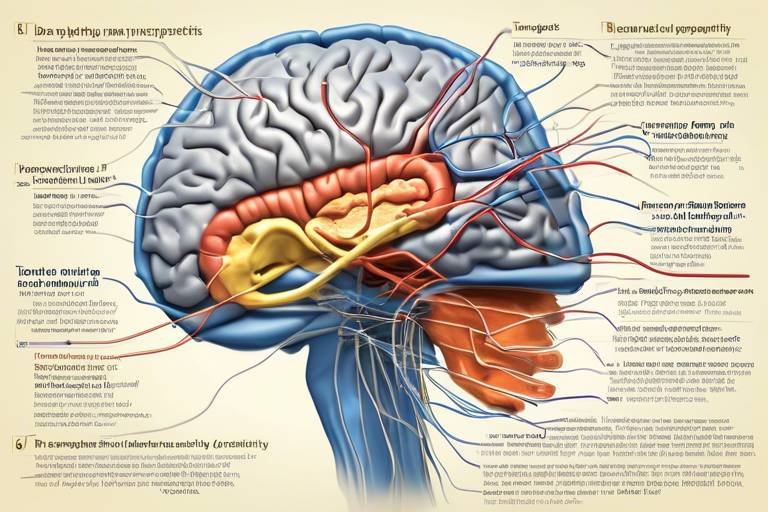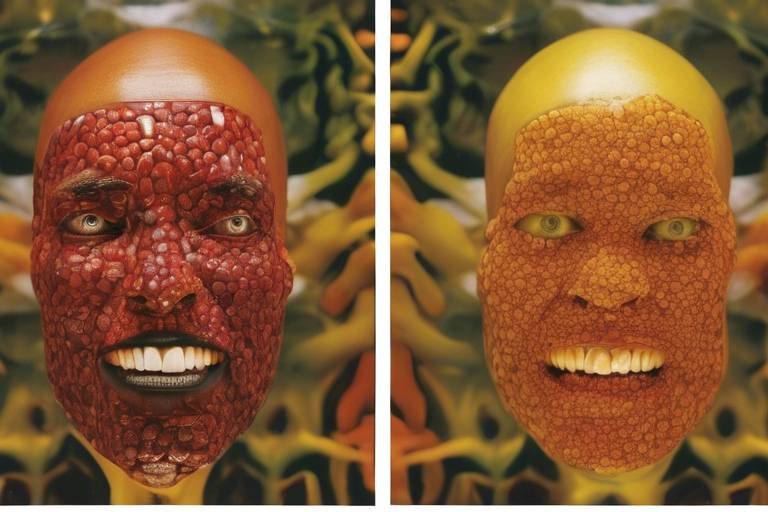The Science of Virtual Reality - How It Affects Us
Virtual reality (VR) is no longer just a futuristic concept; it's a transformative technology that is reshaping our experiences across various domains. From gaming to education, and even therapy, VR immerses users in a digital environment that feels incredibly real. But what exactly happens to us when we put on those VR headsets? This article explores the intricate workings of virtual reality technology and its psychological, social, and physiological impacts on users, enhancing our understanding of its applications and implications in various fields.
Immersion in virtual reality can significantly alter perception and emotional response. When users enter a VR environment, their brains process these immersive experiences in ways that can feel more intense than traditional media. This phenomenon occurs because VR engages multiple senses simultaneously, tricking the brain into believing it is experiencing reality. The sensation of being 'present' in a virtual environment can lead to heightened emotional reactions, making VR a powerful tool for storytelling and engagement.
One of the most fascinating aspects of VR is its unique ability to foster empathy. By allowing users to step into someone else's shoes—quite literally—VR can enhance understanding and compassion towards others. Imagine experiencing life as a refugee or a person living with a disability; these virtual experiences can evoke profound emotional responses that traditional media cannot. This capability of VR to create a sense of shared experience is not just a gimmick; it has real implications for social change and awareness.
Presence, or the sensation of being in a virtual space, plays a crucial role in VR experiences. This feeling of 'being there' influences emotional engagement and user behavior. When users feel truly present in a virtual environment, they are more likely to react emotionally to events occurring within that space. This can lead to greater investment in the narrative or educational content being presented, making VR an effective medium for both entertainment and learning.
Cognitive load refers to the amount of mental effort being used in working memory. In a VR setting, cognitive load can fluctuate significantly. For instance, a well-designed VR experience can streamline information processing, making learning more effective and enjoyable. Conversely, poorly designed environments can overwhelm users, leading to confusion and frustration. Understanding how VR impacts cognitive load is essential for developers aiming to create engaging and educational content.
Social interactions in virtual environments can differ significantly from real-life interactions. In VR, users can communicate and collaborate in ways that transcend geographical barriers. However, these interactions can also present challenges. While some users may find it easier to express themselves in a virtual space, others might struggle with the lack of physical cues. Exploring how VR influences communication, relationships, and social dynamics among users is crucial for harnessing its full potential.
The use of virtual reality in educational settings is gaining traction, and for good reason. Immersive experiences can improve memory retention and engagement in learners. Studies have shown that students who participate in VR-based learning environments often outperform their peers who learn through traditional methods. This is largely due to the engaging nature of VR, which captures attention and fosters a deeper connection with the material being studied.
Therapeutic applications of VR are gaining traction in mental health treatment. From exposure therapy for phobias to pain management techniques, VR showcases immense therapeutic potential. The ability to simulate real-world scenarios in a controlled environment allows therapists to help clients confront their fears and anxieties safely. This innovative approach is revolutionizing how we think about treatment and rehabilitation, providing new hope for many individuals.
While VR offers numerous benefits, it also raises concerns about addiction and overuse. The immersive nature of VR can lead to excessive engagement, which may have negative psychological implications. Users may find it challenging to balance their virtual experiences with real-life responsibilities, leading to a phenomenon known as "VR addiction." It's essential to address these concerns and promote responsible engagement with VR technology.
The future of virtual reality technology holds immense potential across various sectors. As technology continues to evolve, we can expect advancements that enhance realism and interactivity in VR environments. However, with these advancements come ethical considerations. Questions about privacy, consent, and the psychological effects of increasingly realistic virtual experiences must be addressed as we move forward. The implications of VR technology are vast, and it is crucial to navigate this landscape thoughtfully.
- What is virtual reality? - Virtual reality is a simulated experience that can be similar to or completely different from the real world, often involving the use of special equipment like VR headsets.
- How does VR affect our emotions? - VR can evoke strong emotional responses by immersing users in experiences that feel real, leading to heightened empathy and engagement.
- Can VR be used for educational purposes? - Yes, VR is increasingly being used in educational settings to enhance learning outcomes and improve memory retention.
- What are the risks of using VR? - Potential risks include addiction, overuse, and the psychological effects of prolonged immersion in virtual environments.

The Psychology of Immersion
Immersion in virtual reality (VR) is not just about wearing a headset and experiencing a 3D world; it’s a profound psychological journey that can significantly alter our perception and emotional responses. When we enter a virtual environment, our brains become engrossed in the simulation, creating a sensation that can feel as real as life itself. This phenomenon is often referred to as the "sense of presence," where users feel as though they are truly part of the virtual space, rather than just observers. But how does this work? Well, it all comes down to how our brains process sensory information and construct reality.
Our brains are wired to respond to stimuli in ways that can lead to genuine emotional reactions. For instance, when you’re navigating a VR landscape that simulates a high cliff, your body might react with a rush of adrenaline, even though you know logically that you are safe. This is because the brain prioritizes immersive experiences, often blurring the lines between reality and simulation. The psychological effects of this immersion can be profound, leading to increased engagement, heightened emotional responses, and even altered perceptions of time and space.
Moreover, immersion in VR can create a unique opportunity for users to confront fears or experience scenarios they might not otherwise encounter. This is particularly relevant in therapeutic settings, where VR can simulate anxiety-inducing environments in a controlled manner, allowing individuals to practice coping strategies. In essence, the immersive nature of VR serves as a powerful tool for both entertainment and therapeutic purposes, engaging users in ways that traditional media simply cannot.
However, the effects of immersion are not universally positive. While many users report feelings of excitement and connection, others may experience discomfort or disorientation, known as "motion sickness" in VR contexts. This highlights the importance of understanding individual differences in how people respond to immersive experiences. Factors such as prior experience with technology, susceptibility to motion sickness, and even personality traits can influence how one interacts with VR environments.
To better understand the psychological impact of immersion, researchers often examine various aspects such as:
- Emotional Engagement: How deeply users connect with the virtual experience.
- Cognitive Load: The mental effort required to navigate and interact within the VR space.
- Behavioral Changes: How immersion influences actions and decisions in both virtual and real-world contexts.
In conclusion, the psychology of immersion in virtual reality is a complex interplay of sensory input, emotional response, and cognitive processing. As technology continues to evolve, understanding these psychological dynamics will be crucial in harnessing the full potential of VR across various fields, from education to therapy. The more we learn about how immersion affects us, the better we can design experiences that are not only engaging but also beneficial for users.
- What is immersion in virtual reality? Immersion refers to the sensation of being physically present in a non-physical world, created by VR technology.
- How does VR affect emotional responses? VR can trigger genuine emotional reactions by simulating real-life experiences, making users feel as if they are truly part of the environment.
- Can everyone experience immersion in the same way? No, individual differences such as prior experience, susceptibility to motion sickness, and personality traits can affect how one experiences immersion.

Have you ever wondered what it feels like to walk a mile in someone else's shoes? Virtual reality (VR) offers a unique opportunity to do just that. By immersing users in various scenarios, VR can evoke profound emotional responses and foster a sense of empathy that traditional media simply cannot achieve. Imagine experiencing the world as a refugee, or feeling the challenges faced by someone with a disability. These immersive experiences can change our perceptions and deepen our understanding of others’ struggles.
Empathy is not just a buzzword; it’s a vital component of human connection. When we engage with VR, our brains respond as if we are actually experiencing the events unfolding before us. This phenomenon, often referred to as the "illusion of presence," allows users to feel as though they are truly part of the virtual world. Research has shown that this sensation can lead to increased emotional engagement and a greater willingness to understand and support others. In effect, VR acts as a powerful tool for cultivating compassion.
One of the most fascinating aspects of VR is its ability to break down barriers. For instance, consider a VR simulation that places users in the shoes of a person from a different cultural background. By experiencing life from that perspective, users can gain insights into the challenges and joys of others, fostering a sense of community and shared humanity. This is especially important in today’s increasingly polarized world, where understanding and empathy can bridge divides.
Moreover, the potential applications of VR in enhancing empathy extend beyond personal development. Educational institutions and organizations are beginning to harness this technology for social and emotional learning. For example, some programs use VR to teach students about social issues, helping them to understand the impacts of poverty, discrimination, and mental health challenges. By engaging students in these immersive experiences, educators can promote critical thinking and inspire a new generation of empathetic leaders.
However, it’s essential to approach this technology with caution. While VR has the power to enhance empathy, it can also lead to emotional fatigue if overused. Users may find themselves overwhelmed by the intense experiences, which can result in desensitization rather than understanding. Therefore, it’s crucial to balance the use of VR for empathy-building with other forms of engagement and reflection.
In conclusion, virtual reality offers a remarkable avenue for enhancing empathy by immersing individuals in diverse perspectives and experiences. As we continue to explore the capabilities of this technology, it is vital to remain mindful of its emotional impacts and to use it responsibly. The journey of understanding others is ongoing, and with tools like VR, we can take significant strides toward a more compassionate world.
- How does VR foster empathy? VR allows users to experience life from different perspectives, enhancing emotional engagement and understanding.
- Can VR be used in education? Yes, many educational institutions are using VR to teach social issues and promote empathy among students.
- Are there any risks associated with using VR for empathy? Overuse can lead to emotional fatigue or desensitization, so it’s important to balance VR experiences with other forms of engagement.
- What are some examples of VR empathy experiences? Examples include simulations that place users in the shoes of refugees, individuals with disabilities, or people from different cultural backgrounds.

When we dive into the world of virtual reality (VR), one of the most captivating aspects is the sensation of presence. This feeling, often described as the sensation of "being there," is what makes VR so compelling and immersive. But what exactly is presence, and why is it so crucial in VR experiences? Think of it like a magic trick; the illusion is only effective if you believe in it. In VR, when you feel truly present, your brain is tricked into accepting the virtual environment as real, which can lead to profound emotional engagement and behavioral changes.
The brain processes these immersive experiences in a unique way. When you're in a VR setting, your sensory inputs—sight, sound, and sometimes touch—converge to create an experience that feels genuine. This multisensory integration enhances your emotional responses, making you feel joy, fear, or even sadness as if you were experiencing those emotions in real life. In essence, presence acts as a bridge between the virtual and the real, allowing users to connect with the content on a deeper level. For instance, in a VR simulation of a natural disaster, the feeling of presence can evoke genuine fear and urgency, prompting users to react as they would in reality.
Moreover, the role of presence extends beyond mere emotional engagement; it also influences user behavior. When users feel present in a virtual environment, they are more likely to engage with the content, participate in activities, and even change their attitudes and beliefs. This phenomenon can be particularly powerful in applications like training simulations, where the stakes are high, and realistic engagement can lead to better outcomes. For example, medical students using VR for surgical training can practice procedures in a risk-free environment, leading to improved skills and confidence when they operate on real patients.
Interestingly, the degree of presence can vary based on several factors, including the quality of the VR technology, the design of the virtual environment, and individual differences among users. Some people may find it easier to immerse themselves in a virtual world, while others might struggle to suspend their disbelief. This variability highlights the importance of creating high-quality VR experiences that maximize presence. Developers often focus on enhancing visual fidelity, creating realistic soundscapes, and incorporating interactive elements that respond to user actions.
In conclusion, the role of presence in virtual reality is pivotal. It not only enhances emotional engagement but also shapes user behavior and learning outcomes. As technology continues to evolve, understanding and optimizing presence will be essential for creating impactful and meaningful VR experiences that resonate with users on multiple levels.

The concept of cognitive load refers to the amount of mental effort being utilized in our working memory. In the context of virtual reality (VR), this load can be significantly affected by the immersive nature of the experience. When users are placed in a VR environment, their brains are tasked with processing a multitude of sensory inputs—visual, auditory, and even haptic feedback. This can lead to varying levels of cognitive load, which can either enhance or hinder the overall experience.
Consider this: when you're fully immersed in a VR game, your brain is not just watching a screen; it's navigating a three-dimensional space, responding to stimuli, and making real-time decisions. This heightened engagement can create a sense of presence, making you feel as though you are truly part of the virtual world. However, this can also lead to an increased cognitive load, especially if the environment is complex or if the tasks at hand require intense focus. In such cases, users may experience mental fatigue more quickly than they would in a traditional gaming or learning environment.
On the flip side, VR can also be designed to reduce cognitive load. For instance, in educational settings, VR can simplify complex concepts by providing interactive simulations that allow learners to visualize and manipulate information. This can lead to better understanding and retention, as the cognitive load is distributed more evenly across various sensory channels. When users can engage with content in a multi-sensory manner, they often find it easier to grasp challenging subjects.
To illustrate the impact of cognitive load in VR, consider the following table that outlines different scenarios and their corresponding cognitive load levels:
| Scenario | Cognitive Load Level | Impact on Experience |
|---|---|---|
| Simple VR Game | Low | Enhanced enjoyment and engagement |
| Complex VR Simulation | High | Potential for mental fatigue and frustration |
| Educational VR Experience | Moderate | Improved understanding and retention |
Ultimately, understanding cognitive load in VR is crucial for developers and educators alike. By designing experiences that balance engagement and cognitive demands, we can create virtual environments that not only captivate users but also promote effective learning and emotional well-being. The key lies in finding that sweet spot where users are challenged but not overwhelmed, allowing them to thrive in their virtual explorations.
- What is cognitive load? Cognitive load refers to the amount of mental effort being used in working memory during a task.
- How does VR affect cognitive load? VR can increase cognitive load due to the complexity of immersive environments, but it can also reduce it by facilitating interactive learning experiences.
- Can VR experiences be designed to minimize cognitive load? Yes, developers can create VR experiences that balance engagement and cognitive demands to enhance user experience.

Social interactions in virtual spaces are an intriguing blend of technology and human connection. When you step into a virtual environment, it’s like entering a new universe where the rules of engagement can differ dramatically from those in the real world. Imagine walking into a bustling virtual café, where avatars are mingling, laughing, and sharing stories, all while you sit comfortably at home. This unique setting can lead to a variety of emotional responses and behaviors that we might not typically exhibit in face-to-face interactions.
One of the most fascinating aspects of virtual social interactions is the concept of anonymity. In many VR platforms, users can create avatars that may not resemble their real-life selves. This anonymity can empower individuals to express themselves more freely, reducing social anxiety and allowing for deeper connections. However, it can also lead to negative behaviors, such as trolling or harassment, as some individuals may feel less accountable for their actions.
Moreover, the non-verbal cues that we rely on in real-life interactions are often translated into virtual gestures and movements. For example, a friendly wave or a nod in VR can convey warmth and approachability, just as it would in the physical world. This ability to replicate body language adds a layer of depth to virtual interactions, making them feel more genuine. However, the absence of physical touch can sometimes create a sense of disconnect, leaving users longing for the tactile sensations of real-life interactions.
Interestingly, research suggests that the quality of social interactions in virtual spaces can rival that of face-to-face communication. A study conducted by researchers found that participants reported feeling equally connected to others in VR as they did in real life, particularly when engaging in cooperative activities. This finding highlights the potential of VR to foster meaningful relationships, especially for individuals who may struggle with socialization in traditional settings.
Nevertheless, it’s essential to recognize the challenges that come with these virtual interactions. While VR can enhance connectivity, it can also lead to feelings of isolation when users spend excessive time in these environments. The balance between virtual and real-world interactions is crucial for maintaining healthy social dynamics. As we navigate this new frontier, understanding the nuances of social behavior in virtual spaces will be vital for creating inclusive and supportive communities.
In conclusion, social interactions in virtual spaces offer a fascinating glimpse into the future of human connection. As technology continues to evolve, so too will our understanding of how to engage meaningfully in these digital realms. The potential for building relationships, fostering empathy, and creating supportive networks is immense, but it requires careful consideration of the psychological and social implications that accompany this new mode of interaction.
- What are the benefits of socializing in virtual reality? Virtual reality can reduce social anxiety, enhance communication skills, and create opportunities for meaningful connections in a safe environment.
- Can virtual interactions replace real-life relationships? While VR can foster connections, it should complement rather than replace real-life interactions to maintain emotional well-being.
- How does anonymity affect behavior in virtual spaces? Anonymity can empower users to express themselves freely, but it can also lead to negative behaviors due to a lack of accountability.

Virtual Reality (VR) isn't just a playground for gamers; it's also revolutionizing the way we learn. Imagine stepping into a history lesson where you can walk through ancient Rome or explore the human body in 3D. This immersive approach captures attention like nothing else, transforming mundane facts into unforgettable experiences. Studies have shown that when learners engage with content in a virtual environment, they are more likely to retain information. But why does this happen?
The secret lies in the way our brains process information. In a traditional learning setting, information is often presented in a linear fashion, which can lead to disengagement. However, VR allows for a more dynamic exploration of concepts. When learners can interact with their environment, they are not just passive recipients of information; they become active participants. This active engagement stimulates multiple areas of the brain, enhancing memory retention and recall.
Furthermore, VR can cater to various learning styles. Visual learners benefit from immersive visuals, while kinesthetic learners thrive on hands-on experiences. For example, a biology student might dissect a virtual frog, gaining a deeper understanding of anatomy without the mess. This adaptability makes VR a powerful tool in diverse educational contexts, from elementary schools to universities.
Research has shown that students using VR technology in their studies can achieve significantly better outcomes. A recent study indicated that students who learned through VR scored, on average, 30% higher on tests compared to those who learned through traditional methods. This statistic illustrates not only the potential of VR but also its effectiveness in enhancing educational outcomes.
| Learning Method | Retention Rate | Engagement Level |
|---|---|---|
| Traditional | 50% | Low |
| Interactive VR | 80% | High |
Moreover, VR can help bridge the gap for learners who struggle in conventional settings. It provides a safe space for experimentation and exploration, reducing the fear of making mistakes. For instance, a student who is hesitant to speak in front of a class can practice public speaking in a virtual environment, gaining confidence and skills without the pressure of a real audience. This unique capability fosters a more inclusive educational experience, allowing everyone to learn at their own pace.
In summary, the effects of virtual reality on learning and memory are profound and multifaceted. By creating immersive, interactive experiences, VR not only enhances retention and engagement but also accommodates different learning styles and needs. As technology continues to evolve, the potential for VR in education is limitless, promising a future where learning is as engaging as it is effective.
- How does VR improve memory retention?
VR enhances memory retention by engaging multiple senses and creating immersive experiences that make information more memorable.
- Can VR be used for all subjects?
Yes, VR can be applied across various subjects, including science, history, and even art, providing unique experiences tailored to each discipline.
- What are the challenges of using VR in education?
Challenges include the cost of technology, the need for training educators, and ensuring that VR experiences are accessible to all students.

Virtual reality (VR) is not just a playground for gamers; it’s becoming a powerful tool in the field of therapy. Imagine stepping into a world where your fears and anxieties can be confronted in a safe and controlled environment. This is the reality that VR offers, and it’s making waves in mental health treatment. With the ability to simulate real-life scenarios, VR can help individuals face their phobias, manage pain, and even recover from traumatic experiences.
One of the most fascinating applications of VR in therapy is in the realm of exposure therapy. In this approach, patients are gradually exposed to their fears through immersive experiences. For instance, someone with a fear of heights can be placed in a virtual environment that simulates being on top of a skyscraper. The gradual exposure helps desensitize the individual to their fear, making it less overwhelming over time. This method is particularly effective because it allows for repeated practice without the risks associated with real-life exposure.
In addition to exposure therapy, VR is also proving beneficial in pain management. Studies have shown that immersing patients in a VR environment can significantly reduce their perception of pain. By distracting them with engaging visuals and sounds, patients report feeling less discomfort during medical procedures, such as wound care or dental work. This technique not only improves the patient experience but also reduces the need for pain medication, which is a win-win for both patients and healthcare providers.
Another area where VR shines is in rehabilitation. For individuals recovering from physical injuries or surgeries, VR can provide a motivating and interactive way to engage in physical therapy. Patients can participate in virtual exercises that are tailored to their specific needs, making rehabilitation more enjoyable and less daunting. Furthermore, the real-time feedback provided by VR systems can help therapists monitor progress and adjust treatment plans accordingly.
However, as with any emerging technology, there are challenges and considerations to keep in mind. The cost of VR equipment and software can be a barrier for some healthcare facilities. Additionally, there is a need for trained professionals who understand how to effectively integrate VR into therapeutic practices. Ethical considerations also arise, particularly concerning patient privacy and the potential for VR to induce anxiety in sensitive individuals. It’s crucial for therapists to approach VR with caution and ensure that it complements traditional therapy rather than replacing it.
In summary, the integration of virtual reality in therapy is a promising development that holds great potential for enhancing mental health treatment. By providing immersive experiences that facilitate exposure, pain management, and rehabilitation, VR is opening new doors for patients and therapists alike. As technology continues to evolve, so too will the possibilities for using VR in therapeutic settings, making it an exciting area to watch in the coming years.
- What types of therapy can benefit from VR? VR can be used in exposure therapy, pain management, and rehabilitation, among other therapeutic applications.
- Is VR therapy safe? Yes, when conducted under the supervision of trained professionals, VR therapy is considered safe and effective.
- How does VR reduce pain perception? VR distracts patients with engaging environments, which can help lower their focus on pain during medical procedures.
- Are there any risks associated with VR therapy? Potential risks include inducing anxiety in some individuals and the need for proper equipment and training.

As with any technology that captivates our imagination and transports us to fantastical realms, virtual reality (VR) carries the risk of addiction and overuse. It's akin to diving into a mesmerizing book or binge-watching a gripping series; the initial thrill can easily spiral into excessive engagement. The immersive nature of VR can create a compelling escape from reality, making it all too easy for users to lose track of time and neglect their daily responsibilities. This phenomenon raises important questions about the psychological implications of prolonged VR use.
One of the primary concerns is that VR can significantly alter our perception of time and reality. Users often report that hours feel like mere minutes when they are engrossed in a VR experience. This time distortion can lead to neglecting essential daily activities such as work, socializing, or even self-care. The line between healthy use and addiction can become blurred, making it crucial to establish boundaries.
Moreover, the psychological impact of overuse can manifest in various ways, including:
- Social Withdrawal: Users may prefer virtual interactions over real-life connections, leading to isolation.
- Escapism: Users might turn to VR to escape from real-life problems, which can exacerbate underlying issues instead of resolving them.
- Desensitization: Prolonged exposure to virtual environments can dull emotional responses, making real-world experiences feel less engaging.
To combat these concerns, it’s essential for users to practice responsible engagement with VR technology. Setting time limits, taking regular breaks, and ensuring a balance between virtual and real-world activities can help mitigate the risks associated with overuse. Additionally, developers and content creators should consider implementing features that encourage users to take breaks and reflect on their VR experiences.
As we navigate the exciting landscape of virtual reality, it's vital to remain aware of its potential pitfalls. By fostering a culture of mindfulness and responsibility in VR usage, we can enjoy its benefits while minimizing the risks of addiction and overuse.
- What are the signs of VR addiction? Signs include neglecting responsibilities, social withdrawal, and a preference for virtual interactions over real-life connections.
- How can I limit my VR usage? Set time limits, schedule breaks, and engage in real-world activities to maintain a healthy balance.
- Is VR therapy effective for treating addiction? Yes, VR therapy can be a valuable tool in treating various addictions by providing immersive environments for exposure therapy.

The future of virtual reality (VR) technology is not just a realm of imagination; it is rapidly becoming a part of our reality. As we stand on the brink of a new technological era, the implications of VR span across various sectors, including education, healthcare, entertainment, and even social interactions. Imagine a world where classrooms are transformed into immersive learning environments, where students can explore ancient civilizations or conduct complex scientific experiments without ever leaving their desks. This is not science fiction; it’s the potential of VR that is already being explored today.
In the field of healthcare, VR technology is paving the way for revolutionary changes. Surgeons can practice intricate procedures in a virtual setting, honing their skills without the risks associated with real-life surgeries. Furthermore, patients suffering from phobias or PTSD can undergo exposure therapy in a controlled environment, allowing them to confront their fears safely. The therapeutic potential of VR is vast, and as technology continues to evolve, we can expect even more innovative applications to emerge.
However, with great potential comes great responsibility. As VR becomes more integrated into our lives, ethical considerations must be taken into account. Issues such as data privacy, consent, and the psychological impact of prolonged exposure to virtual environments need to be addressed. For instance, how do we ensure that users are not negatively affected by immersive experiences? It’s crucial for developers and policymakers to collaborate on creating guidelines that prioritize user safety while promoting the benefits of VR technology.
Moreover, the social implications of VR cannot be overlooked. As virtual environments become more sophisticated, the way we interact with each other may change dramatically. While VR has the potential to connect people across the globe, it also raises questions about the authenticity of these interactions. Are we losing the essence of face-to-face communication? Will virtual relationships ever replace real ones? These are critical questions that society must grapple with as we embrace the future of VR.
To illustrate the potential advancements in VR technology, consider the following table showcasing some anticipated developments:
| Sector | Potential VR Advancements |
|---|---|
| Education | Immersive learning experiences, virtual field trips, and interactive simulations. |
| Healthcare | Enhanced surgical training, remote patient consultations, and therapeutic interventions. |
| Entertainment | Fully immersive gaming experiences, virtual concerts, and interactive storytelling. |
| Social Interaction | Virtual meetups, collaborative workspaces, and enhanced communication tools. |
As we look forward to the future of VR, it’s essential to remain vigilant about the challenges and opportunities that lie ahead. The technology is evolving at a breakneck pace, and staying informed will be key to harnessing its full potential while mitigating risks. Ultimately, the future of virtual reality technology is a canvas waiting to be painted, and it is up to us to ensure that the picture we create is one of innovation, inclusivity, and ethical responsibility.
- What are the primary applications of VR technology?
VR technology is used in various fields, including education, healthcare, entertainment, and training simulations. - How can VR enhance learning experiences?
VR can create immersive environments that engage students and improve memory retention through interactive experiences. - What are the ethical concerns surrounding VR technology?
Concerns include data privacy, the psychological impact of prolonged use, and the authenticity of virtual interactions. - Is VR safe for mental health treatment?
When used appropriately, VR can be a safe and effective method for treating conditions like PTSD and anxiety. - What does the future hold for VR technology?
The future includes advancements in various sectors, but it also requires careful consideration of ethical implications.
Frequently Asked Questions
- What is virtual reality (VR)?
Virtual reality (VR) is a technology that creates a simulated environment, allowing users to immerse themselves in a three-dimensional space. Through the use of VR headsets and sometimes additional equipment, users can interact with this digital world as if they were physically present in it.
- How does VR affect our psychology?
VR can significantly alter our perception and emotional responses. When immersed in a virtual environment, the brain processes experiences in a way that feels real, which can lead to heightened emotional engagement and a stronger connection to the scenarios presented.
- Can VR really enhance empathy?
Absolutely! VR has a unique ability to foster empathy by placing users in the shoes of others. By experiencing situations from different perspectives, individuals can develop a deeper understanding and compassion for others' experiences, which can be especially powerful in educational and therapeutic settings.
- What is the role of presence in VR?
Presence refers to the sensation of being physically present in a virtual space. This feeling is crucial as it enhances emotional engagement and can influence user behavior, making experiences more impactful and memorable.
- How does cognitive load change in VR?
Cognitive load in VR can vary depending on the design of the virtual environment. Well-designed VR experiences can reduce cognitive load by streamlining information processing, while poorly designed ones may overwhelm users, leading to confusion and frustration.
- What are the social implications of VR?
Social interactions in virtual environments can differ significantly from real life. VR can create unique dynamics, allowing for new forms of communication and relationships, but it can also lead to misunderstandings if users are not aware of the differences in social cues.
- How is VR used in education?
In educational settings, VR can enhance learning outcomes by providing immersive experiences that improve memory retention and engagement. Students can explore complex concepts in a hands-on way, making learning more interactive and enjoyable.
- What therapeutic applications does VR have?
VR is gaining traction in mental health treatment, with applications in exposure therapy, pain management, and rehabilitation. By creating controlled environments, therapists can help patients confront fears or manage pain in a safe and effective manner.
- Are there concerns about VR addiction?
Yes, while VR offers numerous benefits, there are rising concerns about addiction and overuse. Excessive engagement can lead to negative psychological effects, so it's essential to practice responsible usage and set limits to enjoy VR safely.
- What does the future hold for VR technology?
The future of VR technology is promising, with potential advancements across various sectors, including entertainment, education, and healthcare. However, as the technology evolves, ethical considerations regarding privacy and user safety will also need to be addressed.

